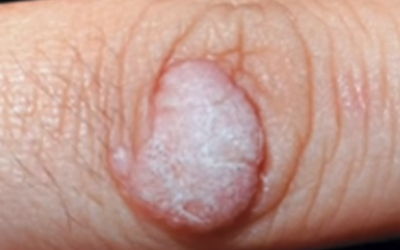Excision of Warts is one of the treatment procedure performed by a dermatologist by cutting out the wart.
Some facts about Warts Removal:
- Warts may go away without treatment in most of the cases. But, treatment is required if you cannot get rid of the warts, the warts hurt, or you have many warts.
- Skin growths that are caused by the human papillomavirus (HPV) are called as Wart.
- Growth of cells on the outer layer of skin get stimulated by HPV causing warts.
- Most commonly it appear on the fingers, near the fingernails, or on the hands. Warts can also appear in the genital area by certain types of HPV.
- HPV which is the main cause of warts may spread by person to person contact or through direct contact with an object used by a person with the virus.
- Genital warts should be evaluated by a doctor.
- The warts can return at the same site or appear in a new spot as there is no cure for the wart virus.
- The new warts appear as fast as old ones go away which happens when the old warts shed virus cells into the skin before the warts are treated.

Types of Warts:
- A flesh-colored or light brown lumps that are flecked with small clotted blood vessels and appear as tiny black dots are called as Plantar warts. Usually these appear on the soles of the feet.
- A small flesh-colored, pink, or red growths that appears in the pubic area, on the genitals, in or around the anus, and/or in the vagina are called as Genital warts.
- Genital warts often appear in clusters of three or four, and may grow and spread rapidly. Although they may cause mild pain, bleeding, and itching, they are usually not painful.
- Flat warts are generally smoother, flatter, and smaller than other type of warts and they occur on the face as well as on the legs, especially among females.
Procedure for Warts Removal:
Warts found on the skin are harmless and can disappear without treatment in most of the cases. However, treatment is required if it does not go by itself. Sometimes, more than one type of treatment may be necessary as warts may recur after treatment. Most methods require multiple treatments although warts are cleared quickly by the practitioners.
Freezing (Cryotherapy):
- Cryotherapy can be done with over the counter freezing spray products or by your dermatologist. Liquid nitrogen is used to freeze a wart in this procedure.
- It may not freeze the wart deep enough to be effective in case of home treatment which requires temperatures as low as a negative 100 degrees.
- It can also be painful as the spray needs to be applied longer than if you were being treated in the office of a doctor.
- A blister forms around the wart and the dead tissue falls off within one to two weeks if the procedure works.
Cantharidin:
- Cantharidin is use to form a blister around the wart which is an extract of a blister beetle and applied to the skin.
- The area is covered with a bandage after the application of cantharidin. The wart will be lift off the skin by the blister.
Other medications:
- Bleomycin is an anti-cancer medicine that can be injected into a wart to kill a virus. Nail loss is a side efect of this treatment if given in the fingers.
- Imiquimod (Aldara and Zyclara), is an immunotherapy drug that comes in the form of a prescription cream will help stimulate your own immune system to fight off the wart virus.
- Although imiquimod is more effective for genital warts, it is modestly effective on other types of warts.
Salicylic acid:
- Salicylic acid is an over-the-counter wart treatments that contain salicylic acid as the active ingredient come in either gel, ointments or pads form.
- The acid gradually dissolves the wart tissue when applied on a regular basis.
Minor surgery:
- Minor surgery may be used to cut away the wart when warts cannot be removed by other therapies.
- An electric needle or by cryosurgery (deep freezing) will be used to destroy the base of the wart.
Electrosurgery and curettage:
- Electrosurgery or burning is a good treatment that can be used for common warts, filiform warts, and foot warts.
- The wart can be scraped off with a sharp knife or small, spoon-shaped tool in case of Curettage.
- Bot of these two procedures often are used together. The wart will be removed by the dermatologist by scraping it off before or after electrosurgery.
Immunotherapy:
- Immunotherapy may be used if the warts are hard to treat. The own immune system of the patient will be used in this type of treatment to fight the warts.
- A chemical, such as diphencyprone (DCP), will be applied to the warts.
- The warts to go away by causing a mild allergic reaction around the treated warts.
- A shots of interferon can also be given to the patient which help boost the immune system of the body, and gives the body the ability to fight the virus.
Laser surgery:
- An intense beam of light (laser) will be used in this procedure to burn and destroy wart tissue.
- The dermatologist may numb the wart with an anesthetic injection before this treatment.
Over-the-counter medication:
- Over-the-counter medication usually contains salicylic acid and is applied in the form of gel, ointment or lotion.
- The wart eventually peels off when applied regularly. This can not be use for genital warts.
